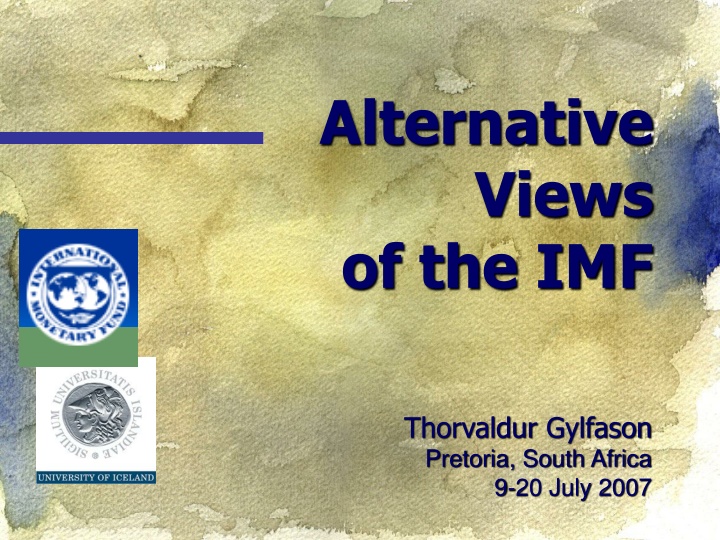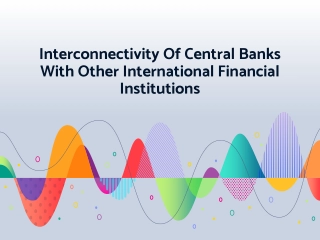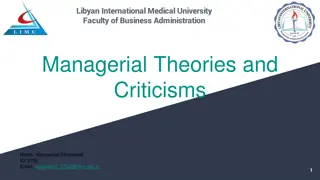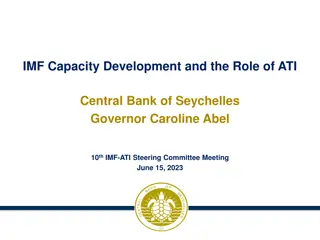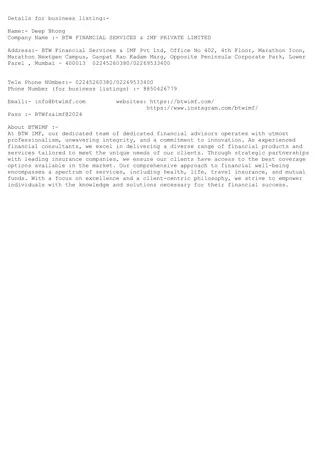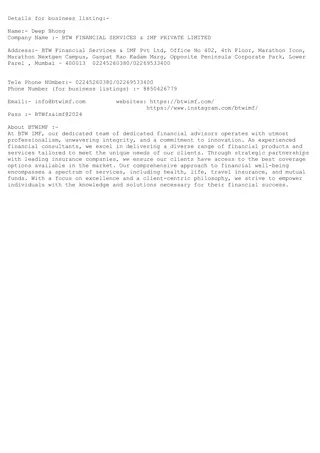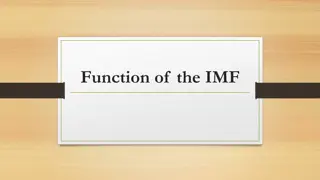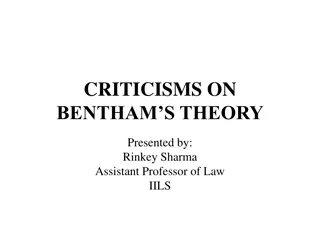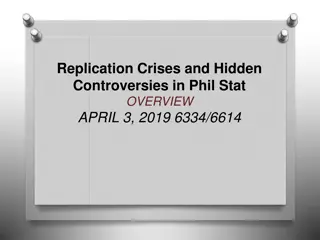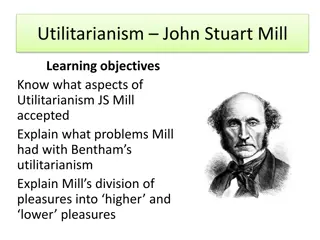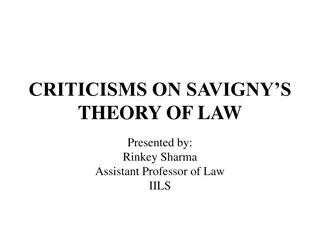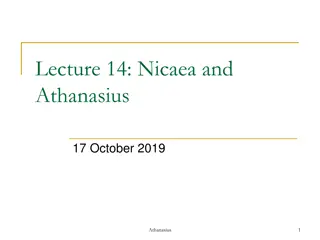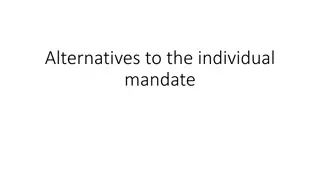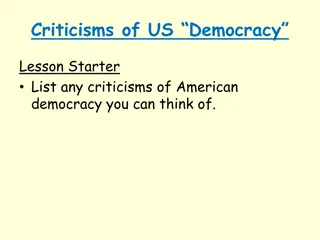Unraveling IMF Controversies: Perspectives and Criticisms
Delve into the realm of political economy through alternative views on the IMF, exploring the intertwining of economic policy with politics, globalization controversies, and ongoing debates regarding IMF programs and their impacts on countries' economies. Examine questions about the Fund's responsiveness, alignment with its shareholders, program effectiveness, and its stance on globalization.
Download Presentation

Please find below an Image/Link to download the presentation.
The content on the website is provided AS IS for your information and personal use only. It may not be sold, licensed, or shared on other websites without obtaining consent from the author.If you encounter any issues during the download, it is possible that the publisher has removed the file from their server.
You are allowed to download the files provided on this website for personal or commercial use, subject to the condition that they are used lawfully. All files are the property of their respective owners.
The content on the website is provided AS IS for your information and personal use only. It may not be sold, licensed, or shared on other websites without obtaining consent from the author.
E N D
Presentation Transcript
Alternative Views of the IMF Thorvaldur Gylfason Pretoria, South Africa 9-20 July 2007
Background: Political economy is inherently controversial Positive vs. normative economics Milton Friedman (1957) Economic policy is intertwined with politics and political debate Dividing lines in politics Right vs. left not always helpful Efficiency vs. equality Free trade vs. protectionism Public interest vs. special interests
Background: Political economy is inherently controversial Economists can disagree on politics But they can still be objective Old controversies about plan vs. market are now dead New controversies about globalization have replaced them, including Renewed controversies about the IMF and the World Bank and their programs, projects, and policy recommendations
Two waves of controversy First wave: 1970s and 1980s Main criticism: Fund programs may help strengthen the balance of payments, but they are sometimes inimical to output in the short run Second wave: 1990s and 2000s Several aspects, including Russia, Asia, capital flows, globalization Ongoing, unsettled
Outline of controversies 1. Is the Fund subservient to its main shareholders? 2. Fund programs: Is one size meant to fit all countries? 3. Do Fund programs strengthen the balance of payments as intended? 4. Do Fund programs hurt output and growth?
Outline of controversies 5. Did the Fund respond too slowly in Russia? 6. Did the Fund advocate premature financial liberalization in Asia? 7. Did the Fund advocate excessive increases in interest rates in Asia? 8. Is the Fund on the wrong side of the debate about globalization?
Outline of controversies 5. Did the Fund respond too slowly in Russia? 6. Did the Fund advocate premature financial liberalization in Asia? 7. Did the Fund advocate too large increases in interest rates in Asia? 8. Is the Fund on the wrong side of the debate of globalization?
Subservience to owners? Fund is occasionally accused of partiality in favor of its main shareholders. Is this a fair charge? Some think so, others do not Analogy: Owners of newspapers typically limit their interference to their selection of editors Few editors admit to being under pressure from owners, but there are exceptions, also in the IMF s history
One size for all? Background: Resistance to reforms based on argument that general principles do not apply here Exemptions from economic laws But rivers always flow downstream A basic principle of IMF operations has always been to treat countries uniformly and yet acknowledge their different circumstances So, tailor programs to specific needs
Do Fund programs strengthen the balance of payments? Not really controversial; they do Empirical evidence shows that Fund programs work chiefly as intended Reduce current account deficits Bolster foreign exchange reserves Reduce inflation, but not always, partly because of currency depreciation To see how, and prepare for #4, consider a small model
Reserves and output in the short run: A simple model Express key accounting linkages in terms of simple algebra Use model to describe how nominal income and reserves depend on domestic credit Demonstrate how BOP target translates into prescriptions for fiscal and monetary policies Financial programming in action
List of variables M = money D = domestic credit R = foreign reserves R = R-R-1 = balance of payments P = price level Y = real income v = velocity X = real exports Px = price of exports Z = real imports Pz = price of imports F = capital inflow m = propensity to import
List of relationships M = D + R M = (1/v)PY R = (1/v)PY D R = PxX PzZ + F PzZ = mPY R = PxX mPY + F + R-1 (B schedule) (money demand) (M schedule) (balance of payments) (import demand) (monetary survey)
The M schedule Reserves (R) M schedule R = (1/v)PY D PY = v(R + D) 1 An increase in reserves increases quantity of money, and hence also income v D up PY is nominal income GNP (PY)
The B schedule Reserves (R) R = PxX mPY + F + R-1 An increase in income encourages imports, so reserves decline m 1 F up, e down B schedule GNP (PY)
Domestic credit contraction Reserves (R) M When D falls, M also falls, so that PY goes down and PzZ also decreases. Therefore, R increases. Here, an improvement in the reserve position is accompanied by a decrease in income. M C D down R* A B GNP (PY)
Domestic credit contraction Reserves (R) M So, credit restraint per se strengthens the BOP: R increases. But, and this was the charge against the IMF, income goes down, and this means that real income goes down because prices are sticky. M C D down R* A B GNP (PY)
Do Fund programs hurt output in the short run? Not in theory because Fund programs contain at least two main elements Fundamental rule of the theory of economic policy: It takes two stones to hit two birds So, use credit policy to adjust BOP And, use some other instrument to address the implications for output E.g., exchange rate policy or structural measures that impact the supply side
Domestic credit contraction accompanied by devaluation* Reserves (R) When D falls, M also falls, so that PY goes down and PzZ also decreases. Therefore, R increases. Further, devaluation* strengthens the reserve position and helps reverse the decline in income. M M C R* F up, e down B A B D down GNP (PY) *Or, e.g., capital account liberalization
Domestic credit contraction accompanied by devaluation* Reserves (R) So, BOP improves through both channels: credit restraint and devaluation*. Meanwhile, income can go either up or down, or stay the same. M M C R* F up, e down B A B D down GNP (PY) *Or, e.g., capital account liberalization
Domestic credit contraction accompanied by devaluation* Reserves (R) So, not surprising that a number of empirical studies found no evidence of negative effects of Fund programs on output. M M C R* F up, e down B A B D down GNP (PY) *Or, e.g., capital account liberalization
The importance of appropriate side measures eP Real exchange rate: Q = * P Devaluation* must be accompanied by fiscal and monetary restraint in order to prevent prices from rising and thus eating up the benefits of devaluation To work, nominal devaluation must result in real devaluation *Or, e.g., capital account liberalization
First-wave studies Four kinds of studies in ascending order of complexity* Before and after With and without Generalized evaluations Comparisons of simulations All concluded that, in most Fund programs, output did not go down *Haque and Khan, Do IMF-Supported Programs Work? A Survey of the Cross-Country Empirical Evidence, IMF WP 1998.
Four recent internal review papers (November 2004) Policy Development and Review The Design of Fund-Supported Programs Overview Fund-Supported Programs Objectives and Outcomes Policy Formulation, Analytical Frameworks, and Program Design Macroeconomic and Structural Policies in Fund-Supported Programs: Review of Experience
Do Fund programs hurt output growth in the long run? The distinction between short run and long run was not so clear in the first wave This was before the endogenous growth revolution that we discussed before In the second wave, the distinction was clear, and the old criticism that Fund programs restrained economic activity in the long run resurfaced True or false?
Do Fund programs hurt output growth in the long run? Technically, this is difficult to ascertain because the long run spans several decades Do not want to wait that long for evidence of growth effects of Fund programs So, approach the question from a different direction Consider, as a benchmark, a small model of growth and inflation
Inflation and growth in the long run: A simple model Express key linkages between inflation and growth in simple algebra Use model to describe how growth and inflation depend on monetary and fiscal policy Demonstrate how the need for low inflation and rapid growth translates into prescriptions for fiscal and monetary policies, and more
List of variables = inflation (%) m = monetary expansion (%) g = growth rate of output (%) s = saving rate (% of GDP) E = efficiency (from Y = EK) = depreciation rate (%)
Two relationships = m g g = sE( ) - (Q schedule) (G schedule) Q schedule is derived from Mv = PY by assuming v is constant and converting the equation to percentage changes G schedule comes from growth lecture Two negatively sloped relationships between inflation and growth: let s draw them!
Inflation and growth Inflation G g = sE( ) - m Q A = m g 45 m Economic growth
Increased monetary expansion increases inflation and reduces growth As m goes up, Q shifts right, so also goes up and g goes down because the rise in reduces E. Inflation B A Q Q G 45 45 m1 m2 Economic growth
Increased saving* increases growth and reduces inflation As s goes up, G shifts right, so g also goes up and goes down because m does not move. Inflation G G A B *Including public saving Q 45 m Economic growth
Do Fund programs hurt output growth in the long run? How would we expect long-run growth to respond to Fund programs in this model? The model implies that fiscal and monetary restraint reduces inflation and stimulates long-run growth But output may or may not fall in the short run, a different question Also, recall negative effect of high inflation on long-run growth
Did the Fund respond too slowly in Russia? Jeffrey Sachs* says so He claims that the US wanted Russia to remain weak He wanted a Marshall plan for Russia Even so, the IMF put strong emphasis on Russia and other transition countries in early 1990s and onwards Established European Department II *Jeffrey Sachs, The End of Poverty, Penguin Press, 2005.
Did the Fund call for premature financial liberalization in Asia? Joseph Stiglitz* says so How would we describe a collapse of confidence as occurred in Thailand in 1997 in our models? By a plunge in F in the short-run model, so both R and Y go down By an outward shift of the Q schedule in the long-run model, so goes up and g goes down *Joseph Stiglitz, Globalization and its Discontents, W. W. Norton, 2002, and Making Globalization Work , W. W. Norton, 2006.
Collapse of confidence: The short run Reserves (R) When F falls, B shifts left, so that both R and PY go down from A to C. (The resulting fall in e may help reverse the leftward shift of B.) Dilemma: How should monetary policy react? Should D expand or contract? M A ? F down C B ? B GNP (PY)
Collapse of confidence: The short run Reserves (R) If D expands, interest rates fall, so F falls further and B shifts farther to the left. If D contracts, interest rates rise, so the fall in F is reversed and B shifts back to the right. Malaysia restricted movements of F. M A F down C B B GNP (PY)
Did the Fund advocate too much monetary restraint in Asia? Stiglitz* says so, as does Sachs They have a point, as IMF concedes Without knowing well how to sequence policy reactions, an attempt was made to do as much as possible at once In retrospect, Malaysia was probably right to restrict capital movements Liberalization of trade should precede liberalization of capital movements to reduce volatility *Joseph Stiglitz, Globalization and its Discontents, W. W. Norton, 2002, and Making Globalization Work , W. W. Norton, 2006.
Collapse of confidence: The long run When confidence collapses, money demand goes down (v goes up), so Q shifts right, inflation goes up and growth slows down. Inflation B A Q Q G m1 m2 Economic growth
Collapse of confidence: The long run Need to increase s through fiscal measures to shift G rightward and reduce m through monetary policy to shift Q leftward to move back southeast from B. Inflation B A Q Q G m1 m2 Economic growth
Is the Fund on the wrong side of the debate of globalization? No! not in my view But Stiglitz and others raise good points about, inter alia, increased inequality, pointing out that Asia grew rapidly with reasonable equality in the distribution of income Inequality has increased recently due, in part, to globalization and to rapid technological progress Recall: Equality may be good for growth
Development assistance: A mixed blessing? William Easterly* says so Unconditional foreign aid as manna from heaven Aid, like natural resources, needs to be well managed Aid accompanied by good policies is more effective than aid with bad policies Rationale for conditionality *William Easterly, The Elusive Quest for Growth, MIT Press, 2001, and The White Man s Burden, Penguin Press, 2006.
In fairness to the Fund Increased transparency Publication of policy recommendations and discussions on the web Transparency helps local reformers as they are able to point to Fund advice Increased openness Fund no longer circumnavigates sensitive matters like corruption if it is a matter of macroeconomic concern Examples: Kenya, Russia
Conclusion: Changing role of the Fund World has changed, IMF adjusted The long run matters, too So, Fund and Bank overlap more than before Fund programs now are more varied than before Public health issues are now a macroeconomic concern Institutional issues now receive more attention Financial markets; same is true of national central banks Personally, I think Fund has done good Policy advice, technical assistance, training Example: Emphasis on inflation control has helped bring inflation down around the world, and remember! that s good for growth
